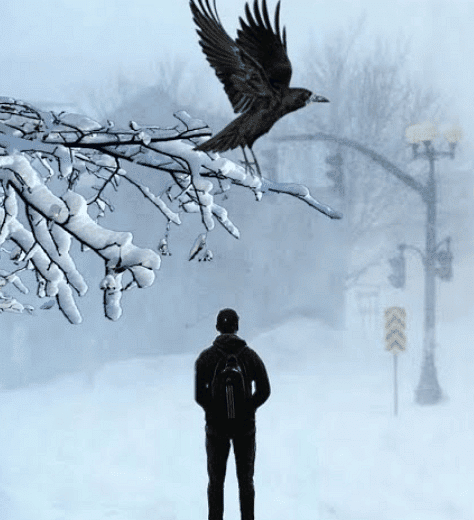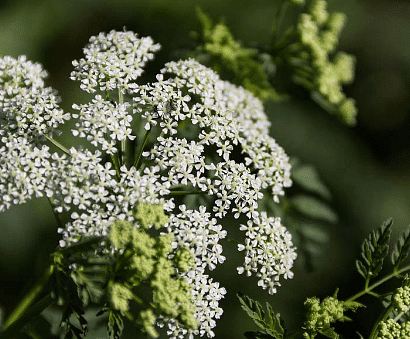Class 10 English Chapter 1 Question Answers - First Flight
Q1: What do the ‘Hemlock’ tree and ‘Crow’ represent? What does the dust of snow metaphorically stand for?
Ans: The crow and hemlock tree represent the sorrow and depression felt by the poet in this materialistic world. The dust of snow is the symbol of natural joy and energy. The dust of snow that the crow shakes off a hemlock tree means passing through the sad and depressing moments the poet is entering into a time full of joy and optimism.
Q2: What made the poet change his mood and how?
Ans: A crow on the hemlock tree shook down the dust of snow on the poet. The falling dust of snow on the poet has changed his mood. The poet was going somewhere on a snowy morning. He was upset. All the trees were covered with snow dust. A crow sitting on a hemlock tree shook the tree so that some dust of snow fell on the poet. This changed his mood, and he became happy and relaxed.

Q3: What was the reaction of the poet when the dust of snow fell on him?
Ans. Normally, people thought both crow and hemlock trees were inauspicious. But when the dust of snow from the hemlock tree fell on the poet, he took it in another way. He was depressed and sorrowful, but the moment the crow shook the hemlock tree and the dust of snow fell on him, he felt unburdened and relieved.
Q4: Why does the poet feel that he has saved some part of the day?
Ans: Crow shook down the dust of snow on the poet. Both crow and hemlock trees are considered inauspicious. The falling of dust of snow from hemlock trees is a bad omen. But the poet took it positively. He found himself relieved from sorrow after this incident. Now he could fruitfully use his entire day.
Q5: Who is the poet of the poem ‘Dust of Snow’?
Ans: The poet of this poem is ‘Robert Frost’.
Q6: Narrate a similar experience of your life when nature intervened and changed your mood. Discuss.
Ans: Normally, people thought both crow and hemlock trees were auspicious. But when the dust of snow from the hemlock tree fell on the poet, he took it another way. He was depressed and sorrowful, but the moment the crow shook the hemlock tree, and the dust of snow fell on him, he felt unburdened and relieved.
Q7: What is a “Dust of Snow”? What does the poet say has changed his mood? How has the poet’s mood changed?
Ans: A ‘Dust of Snow” means the fine particles of snow. This ‘Dust of Snow” changed the poet’s mood. The poet’s mood changed from that of dismay to joy. He was holding the day in regret when this dust of snow fell on him, and this simple little thing brought him joy.
Q8: How has the poet observed nature in the poem ‘Dust of Snow.’
Ans: The poet has observed nature as a positive medium of change for him. The poet has a sorrowful and depressive mood in the poem. But then in his way when a crow shook snow dust off, his mood changed. Nature inspired him to behave positively.
Q9: What is the underlying message for us in our hectic lives with reference to the poem, ‘Dust of Snow’?
Or
What is the central idea of the poem ‘Dust of Snow’?
Or
What does the poet want to convey through the poem ‘Dust of Snow’?
Ans: In the poem ‘Dust of Snow’, the poet wants to convey that sometimes certain simple moments or actions have larger significance. They can change the mood or life of a person. The poet draws inspiration from a crow shaking off the dust from its feathers, prompting him to shed his depressive thoughts, embrace cheerfulness, and engage in productive pursuits.
Q10: What side of nature do ‘crow’ and ‘hemlock’ represent?
Ans. ‘Crow’ is a black, harsh-voiced bird, and ‘hemlock’ is a tree with poisonous bitter fruit. Both are not beautiful. They represent the dark, depressive, sorrowful, and bitter side of nature.
 Hemlock TreeQ11: Why does the poet use such a poetically uncommon bird and tree? What does it reflect?
Hemlock TreeQ11: Why does the poet use such a poetically uncommon bird and tree? What does it reflect?
Ans: The poet uses such poetically uncommon bird and tree because he is feeling sad and upset. These images reflect his mood because they are not typically seen as beautiful or pleasant in poetry.
Q12: What mood of the poet is reflected in the poem? How does it reflect?
Ans: The sorrowful and depressive mood of the poet is reflected in the poem. The use of the bird ‘crow’, which is ugly and harsh, and the hemlock tree, a poisonous plant, reflects the poet’s mood.
Q13: What did the poet think of the day before the dust of snow fell on him?
Ans. Before the snow dust fell on him, the poet believed his day was spoiled and his mood was gloomy. However, when the snow dust fell on him his perspective shifted, bringing happiness and improving his mood.
Q14: Write a note on the setting of the poem.
Ans: The poem presents a perfect setting. There are four elements in the poem. All these four elements match one another. The snow stands for depression. The hemlock tree is a symbol of sadness. The crow was considered ominous. The poet’s mood is also sad. But suddenly, how the crow shook the hemlock tree and the snow dust fell off changed the poet’s mood.
Q15: The flow was the poet’s mood? What brought a sudden change in it?
Ans: The poet was in a bad mood. He considered that his day was ruined. But when the crow shook the tree and dust of snow fell on him which changed his mood and rest of the day was saved for him.
Q16: How did the poet feel before the ‘change of mood’? Why did he feel so?
Ans: The poet was in a very depressed and hopeless mood. The day offered no relief, comfort or happiness for the poet. He felt that the whole day had been wasted for nothing. Perhaps his dull and depressive mood led him to such a conclusion.
Q17: Do you think that the poet presents a very bright or cheerful side of nature in the poem? Give a reasoned answer.
Ans: No, Robert Frost has presented nature in its elemental and raw form. It is quite a dull and depressive wintry day. The fall of fine dust snow does bring a sudden change in the poet's mood. It refreshes his spirits and brings cheerfulness to his depressed spirits and mood.
Q21: Describe the scene of falling off the dust and the snow. What impact does it have on the poet?
Ans: It is a dull and depressing day of the winter. Snow is falling. The fine dust of snow has accumulated on the top of the trees. Nature seems to be in its elemental and raw state. However, the fullness of the fine dust of snow brings a sudden change in the poet's mood. His depressive spirits are uplifted, and his mood becomes cheerful.
Q18: ‘The Crow’ and the ‘hemlock tree’ are generally considered inauspicious and ominous symbols. Does the poet use them so?
Ans: ‘The Crow’ and ‘the hemlock tree’, no doubt, don’t represent cheerfulness or brightness. Both of them are generally considered to be inauspicious. But ‘the crow’ in the poem causes the dust of snowfall on the poet. This leads to the sudden change of mood in the poet. The feeling of cheerfulness replaces the feeling of regret. Similarly, the hemlock tree is the tree under which the poet is standing and experiencing the change in his mood.
Q19: Why does the poet say that he had `saved some part of a day I (he) had rued’?
Ans. The whole day had been rather gloomy, dull, and hopeless. The poet had a feeling that the whole day would go to waste. However, the falling of the fine dust of snow on him suddenly changes his mood. It cheered his depressed spirits. He felt as if he had saved some part of the day.
Q20: What is the message that Robert Frost wants to convey to the readers in the poem ‘Dust of snow’?
Ans. Robert Frost gives quite a positive message to the readers. Depression and hopelessness do cloud our hearts, spirits, and moods. However, there is a silver lining beyond every cloud. The poet had given up all hope and declared that the whole day would go to waste. Suddenly, the falling of fine dust of snow on him brings a sudden change in his mood. Cheerfulness replaces the feeling of regret.
|
36 videos|531 docs|58 tests
|
FAQs on Class 10 English Chapter 1 Question Answers - First Flight
| 1. What is the central theme of the poem "Dust of Snow"? |  |
| 2. How does the poet use nature to convey emotions in "Dust of Snow"? |  |
| 3. What is the significance of the crow in the poem? |  |
| 4. How does the structure of the poem contribute to its meaning? |  |
| 5. What literary devices are used in "Dust of Snow"? |  |























